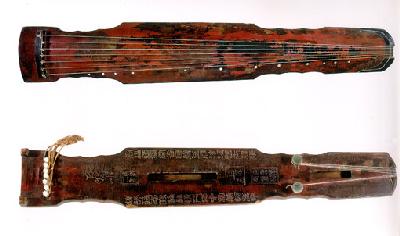Guqin is also called the seven-stringed Qin. The body is a long and narrow sound box made of wood. Generally speaking, it is 130cm long, 20cm wide and 5cm thick. The surface is generally made of paulownia wood or China fir, and has seven strings stretched along it. On the edges are 13 inlaid jade markers. Catalpa wood is used for the base, and there are two holes, one big and one small (called the "phoenix pool" and "dragon pond", respectively) to emit the sound. The fingering techniques are known as recital, rubbing, plucking, concentration, floating notes and harmonious notes (same measure, five measure and octave). The instrument is rich in tone color, with airy, floating notes, and simple and solid scattered notes.

Guqinis a representative instrument of traditional Chinese musical culture. Because it embodied the traditional cultural values of clarity, fineness, simplicity and far-sightedness,Guqin, along with chess, calligraphy and painting, headed the list of four subjects scholars trained themselves in. Throughout history, philosophers and artists such as Confucius, Cai Yong and Ji Kang were all masters of the instrument. Old records contain a large number of treatises onGuqin,and thousands of pieces of music for this instrument have been preserved.
In recent times, a dozen or so masters ofGuqinhave emerged in China, including Wang Lu, Guan Pinghu,Zha Fuxi, Zhang Ziqian, Wu Jinglue, and Gu Meigeng. They have mastered the strong points of the various schools of this instrument and grasped the interpretation of a large number of pieces ofGuqinmusic, manifesting not only their musical skill but also their deep esthetic appreciation.










